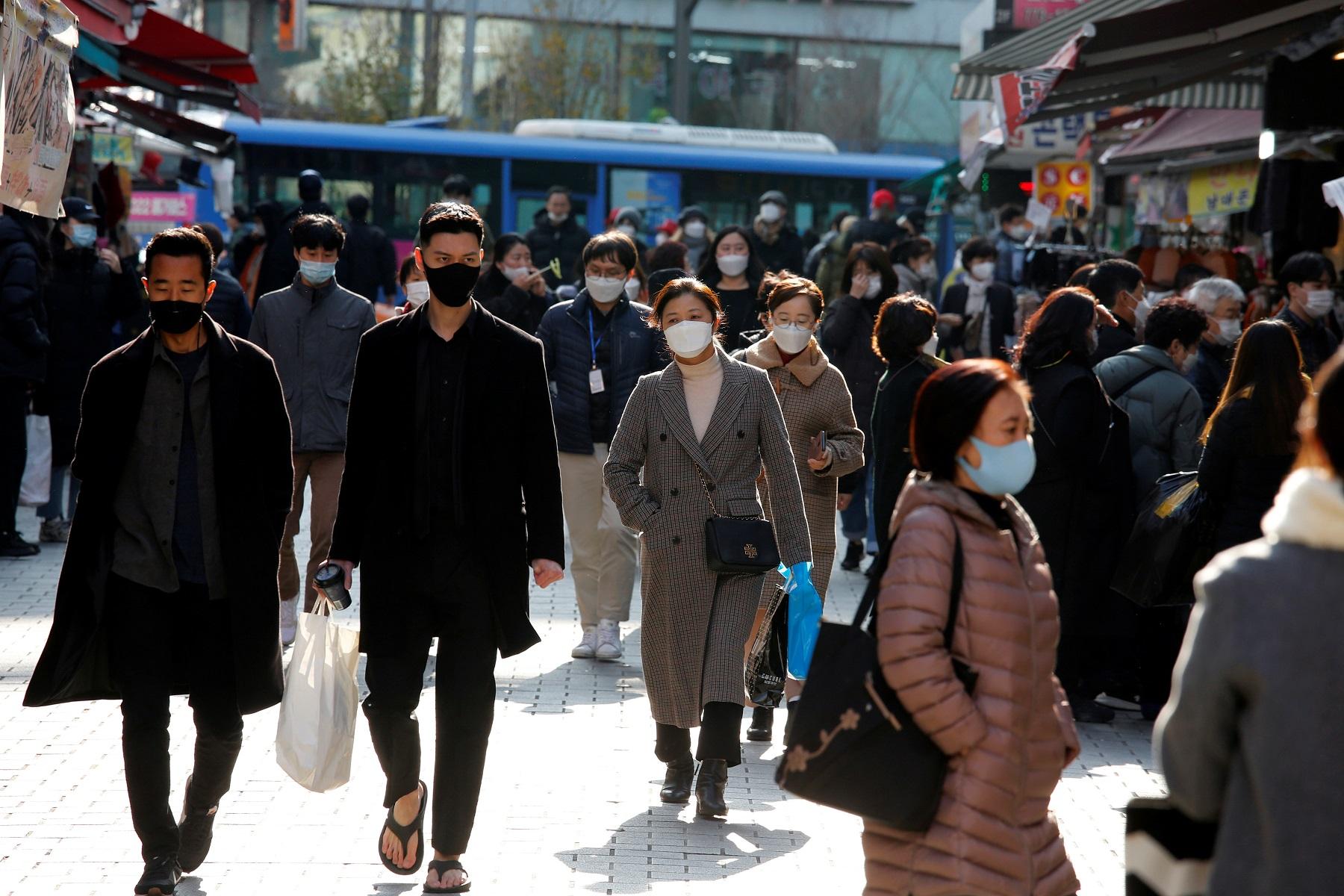A South Korean study shows how a student became infected with COVID-19 after 5 minutes of exposure from 20 feet away

A South Korean study has shown that the six feet "social distancing" may not be enough safety to avoid contracting COVID-19 after a high school student was infected after five minutes of exposure from more than 20 feet away inside a restaurant.
According to a report on LA Times, Dr. Lee Ju-hyun and his colleagues re-created the scene where the student contracted the virus inside a restaurant in Jeonju, where other diners were also infected by COVID-19 from an out-of-town visitor.
The results of the study were published in the Journal of Korean Medical Science which was conducted by Dr. Lee, other epidemiologists, and an aerodynamics engineer.
The LA Times report said the six feet standard of "social distancing" may not be enough to keep people safe from the COVID-19 — at least indoors.
“In this outbreak, the distances between infector and infected persons were ... farther than the generally accepted 2 meter [6.6-foot] droplet transmission range. The guidelines on quarantine and epidemiological investigation must be updated to reflect these factors for control and prevention of COVID-19," the study read.
The report quoted infectious disease expert and chief of strategy and policy for the nonprofit Partners in Health of Massachusetts COVID response KJ Seung saying that this study is a reminder of the risk of indoor transmission.
Seung said of his work in the Massachusetts contract tracing program he noted how business owners and school administrators are fixated on "close contract standard" or how spending hours in the same room at a distance farther than six feet and just 14 minutes of exposure is safe.
“There’s a real misconception about this in the public. They’re thinking, if I’m not in close contact, I will magically be protected," LA Times quoted Seung who is not involved in the study.
LA Times noted how Seung said contract tracers around the world should widen the net in looking for people who might have been infected and to alert people despite them being at lower risk that they may have been exposed.
The report said after the high school senior in Jeonju contracted the virus in June, epidemiologists were puzzled since the city hadn't had a case in two months. The student who contracted the virus hadn't traveled out of the region; only back and forth to their home and school.
Additionally, the report said the contract tracers turned to Korea's Epidemic Investigation Support system, a digital platform that allows investigators to access cell phone information and credit card date of infected individuals in as little as 10 minutes.
The GPS data revealed that the student encountered a COVID-19 patient from a different city and province, a door-to-door saleswoman who visited Jeonju at the first floor of the restaurant on the afternoon of June 12 for just five minutes.
According to the report, the saleswoman did not inform the contract tracing team that she will be visiting Jeonju, which is an hour drive away from a building where her company held a meeting with 80 people.
Dr. Lee said when they went to the restaurant to do their epidemiological investigations, the CCTV recordings showed how the two sat far away from each other, never spoke, did not touch any surfaces in common.
However, after Dr. Lee and his team re-created the situation in the restaurants and measured the airflow they noticed that the high school senior and the other diners who contracted the virus sat directly along the flow of the air from the air conditioner.
The other diners who had their back to the airflow were not infected with COVID-19. They also did genome sequencing and had confirmed that the three patient's virus genomic types had matched.
“Incredibly, despite sitting a far distance away, the airflow came down the wall and created a valley of wind. People who were along that line were infected," Dr. Lee said.
Meanwhile, Marr, a Virginia Tech professor who is also not involved in the study said the pattern of infection in the restaurant showed that the transmission happened through small droplets or large aerosols either landing on the face or being breathed in.



